“ Paradise is not a place; it is a state of consciousness.”
-Sri Chinmoy
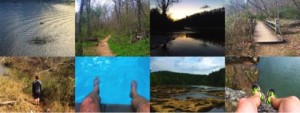
In recent years, in large part in response to the dramatic increase in time that we all spend with our heads down staring at our phones, tablets, and laptops, with our minds anywhere but on the present moment, the term “mindfulness” has become a major buzzword. In our constant attempt to keep up with the latest emerging technologies and apps, and with the expectation that we keep pushing our levels of productivity higher and higher, always thinking about what’s coming up next, we need something to counterbalance this state of sustained output. Mindfulness seems to be the solution to all our problems.
But what exactly is mindfulness, and how does one get to this elusive state? If you Google “mindfulness,” this is the first result that pops up:
“Mindfulness is a state of active, open attention on the present. When you’re mindful, you observe your thoughts and feelings from a distance, without judging them good or bad. Instead of letting your life pass you by, mindfulness means living in the moment and awakening to experience.
Based on that definition, it is clear to me that without a doubt, I currently spend less than the ideal amount of time in a true state of mindfulness. I am constantly checking my phone to see what I’ve missed in the last 3.5 seconds, always thinking about what’s coming up next, and obsessing about how I can squeeze a little bit more work into today so I can “get ahead” for tomorrow. My mind is very decidedly not always “awake to experience.”
When I think back to a time in my life when I was more able to live in the moment, I immediately envision being a kid. My friends and I would spend hours riding bikes, exploring around town, hiking and making forts in the woods, or playing pick-up baseball or basketball at the park. My brother and I could throw a football back and forth in the backyard for 2-3 hours without getting bored, pretending we were professional quarterbacks and wide receivers scoring touchdown after touchdown. In the summer, my friends and I basically lived at the pool, playing all sorts of games like “shark” and freeze tag, and having splash competitions off the diving boards. We’d all play flashlight tag at night, completely losing track of time, only heading inside when we were completely exhausted or someone got hurt running into some backyard clothesline or tripping over a fire pit in the dark. Our minds weren’t somewhere else. They were fully focused on the present moment and on each other.
Now, as an adult with a career and the added responsibilities that come with being “grown up,” it is often difficult to recreate the state of mindfulness that I could so easily slip into as a kid. There’s always something to be planning for, to be worrying about, my mind constantly multitasking to keep track of it all. Add into the mix my iPhone, iPad, MacBook, and the countless social media networks through which a steady stream of DMs, texts, and emails are constantly rolling in, and it becomes all but impossible to avoid being in a constant state of distraction, mentally pulled away from anything or anyone who is right in front of me.
To get myself out of this cycle, to find that elusive state of true mindfulness, I visualize back to when I was a kid and think about what always made me the happiest; what made me feel the most present. Being outside with friends, playing, taking risks, going on adventures, doing things just because they were fun – not because they served a specific purpose.
As I write this, I’m sitting here barefoot by the pool, listening to the sounds of the fountains nearby, the hum of traffic in the distance, and I’m realizing that I feel more mindful at the current moment than I have in a while. Writing has always calmed my mind. At some point I just stopped taking the time to do it. There are a lot of things as you grow up that you just stop taking the time for. New things begin to take priority.
In adulthood, it is my goal to hang on to those priorities that I had as a kid, always trying to look at the world with a newfound sense of wonder, squeezing every last drop of enjoyment out of life. And to me, that means being present, putting myself in new situations that open my mind up to the world around me, and being “awake to experience.”
There are very few days that go by in which I don’t take at least a small amount of time to pull myself out of the constant go-go-go mode I’m in. On the days when devices, email, and adult responsibilities win the battle, I don’t feel like myself. I feel restless and anxious. I can’t focus. My brain feels stifled. I can’t sleep.
So I build time into my days to be mindful. And the quickest way for me to get my mind there has always been through exercise. In the morning, I may head out for a quick run before breakfast. After work, I’ll meet up with a friend or go alone to the nearest trailhead on the Chattahoochee River, and head off down the path. With every step away from the parking lot, I can feel the stress of the day leaving my body; my mind opening up and tuning in to my surroundings; the 754 things I’m supposed to get done this week suddenly don’t seem so difficult to manage. Those things can wait for now.
Learner, Thinker, Writer: Jedd Austin serves the Trinity School community as PE Teacher.

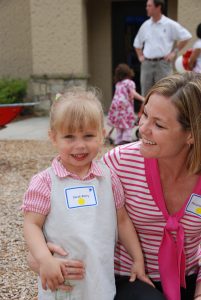
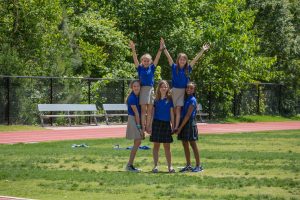 As I have reflected upon her journey at Trinity School, and I have shed more than a few tears at this loss of childhood, I have been immensely proud of the school that has shaped Sarah, allowing her to stretch and honoring the gifts she brings so joyfully. Thank you, Trinity School, for helping my girl flourish.
As I have reflected upon her journey at Trinity School, and I have shed more than a few tears at this loss of childhood, I have been immensely proud of the school that has shaped Sarah, allowing her to stretch and honoring the gifts she brings so joyfully. Thank you, Trinity School, for helping my girl flourish.

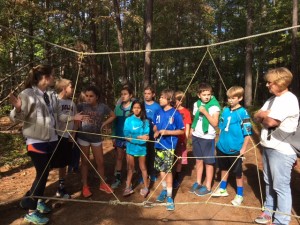



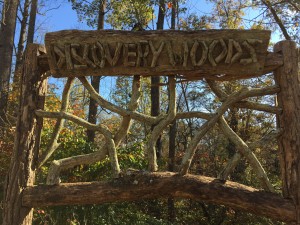
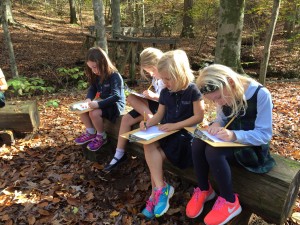


![photo[1]](http://blogs.trinityatl.org/flourish/files/2013/08/photo1-1hz8eyr-300x224.jpg)